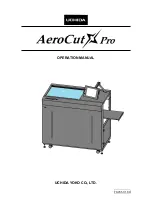
83
Tip:
Not all manufacturers will have the same sizing method for their thread. Threads can be
measured by weight, tex, denier, or scaling that is unique to its brand. Take the time to understand
how the sizing works for a brand you’re considering, and keep a few common sewing rules in mind:
• The thicker the thread, the larger the needle required. A needle that is too thin can shred
thread.
• The thinner the thread, the smaller the needle should be. A needle that is too large will cause
uneven stitching and can leave holes in the fabric.
Thread Type Processing
Cotton
• Mercerized
: Treated to improve strength and colorfastness.
• Glazed
: Waxed or coated to give a polished appearance. The coating may
rub off and build up in machine.
• Gassed
: Exposed briefly to a gas flame to burn away fuzz and lint, giving a
smooth appearance.
Polyester
• Lubricated
: Treated with lubricant to reduce friction. Avoid thread that is oily
to the touch.
• Bonded
: Treated with resin to increase strength. This is typically used for
heavy-duty applications, such as upholstery.
Thread Size
The thickness of the thread is called the weight (wt.). This number is usually stamped on the edge
of the top or bottom of the thread cone. Notice that as the thread becomes heavier and thicker, the
weight decreases:
•
60 weight: Very thin, fine thread that will blend in to the fabric.
•
40 weight: Thicker thread that will show up on the fabric.
Note: choose matching weight and thread type when picking top and bottom (bobbin) threads.
Thread Processing
Sometimes thread is processed to change its properties. The chart below lists the processes common
to cotton and polyester. No extra processing or treatments are typical for silk.
Choosing Your Thread (Continued)
Appendix








































